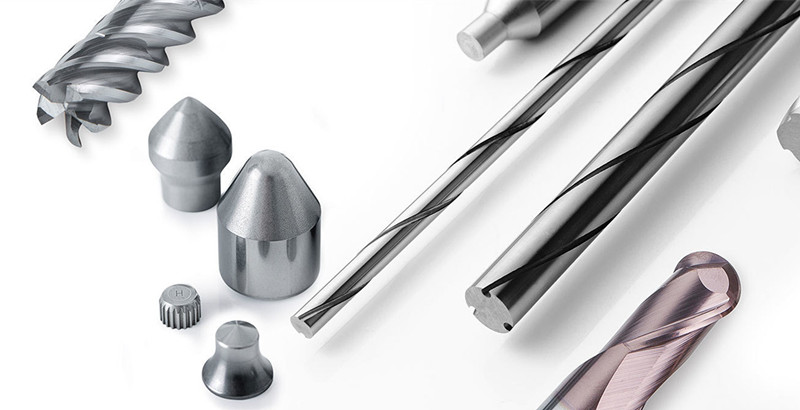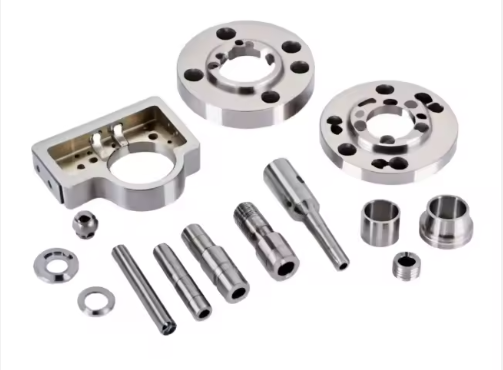Carburo de wolframio frente a titanio y sus prestaciones y usos.
Los materiales metálicos son uno de los materiales más utilizados en la producción industrial y la vida cotidiana. Entre los muchos materiales metálicos, hay uno conocido como "el más resistente al desgaste" que ha llamado mucho la atención. Este material metálico tiene una excelente resistencia al desgaste y puede mantener un estado superficial estable en entornos difíciles. Ha sido ampliamente utilizado y favorecido.

En primer lugar, uno de los materiales metálicos más resistentes al desgaste es el carburo de tungsteno. El carburo de wolframio es un compuesto de wolframio y carbono de gran dureza y resistencia al desgaste. Por ejemplo, varillas y barras de carburo de tungsteno y placas de carburo de tungsteno suelen utilizarse como materiales para herramientas, como cuchillas, brocas, abrasivos y matrices de estampación. Pueden mantener una buena resistencia al desgaste en condiciones de fricción a alta velocidad y carga pesada, por lo que se utilizan ampliamente en el procesamiento mecánico, la minería y otros campos.
La tabla siguiente es la tabla de rendimiento del carburo de wolframio:
| WC | Co | Granulometría (μm) | Dureza(HRA) | Densidad(g/cm³) | TRS (Mpa) |
| 70%-97% | 3%-30% | 0.2-7.9 | 82-94 | 13-16 | 1000-3000 |
En segundo lugar, aleación de titanio es también un material metálico con una excelente resistencia al desgaste. La aleación de titanio tiene buena resistencia a la corrosión y alta resistencia, así como alta dureza y resistencia al desgaste, por lo que se utiliza ampliamente en la industria aeroespacial, la construcción naval, los equipos médicos y otros campos. La resistencia al desgaste de la aleación de titanio le permite mantener un rendimiento estable en entornos difíciles, y ha recibido una amplia atención y aplicación.
La tabla siguiente es la tabla de rendimiento de la aleación de titanio:
| Densidad(g/cm³) | Tracción (Mpa) | Rendimiento (Mpa) | Módulo elástico(GPa) | CTE((10^-6/K)) | λ (W/(m-K)) |
| 4.43 | 830-880 | 750-790 | 110-114 | 8.4-8.7 | 6.7-7.2 |
En tercer lugar, fórmula química: TiC (carburo de titanio), peso molecular: 59,89. Sólido metálico gris con una red cúbica centrada en la cara. Punto de fusión: 3140±90 °C, punto de ebullición: 4820 °C, densidad relativa: 4.93. Dureza superior a 9. Insoluble en agua, soluble en ácido nítrico y agua regia. Estable en el aire por debajo de 800 °C, erosionado por el aire por encima de 2000 °C, y reacciona con O₂ puro a 1150 °C. Preparación: Obtenido por la reacción a alta temperatura de una mezcla de polvo de titanio (derivado de la reducción por hidrógeno del TiO₂) y carbono, o calentando bloques compactados de TiO₂ y polvo de carbono en un horno eléctrico a 2300-2700 °C bajo una atmósfera de H₂ o CO para su carbonización.
| Densidad(g/cm³) | Resistencia a la flexión (Mpa) | Dureza Mohs | Módulo elástico(GPa) | CTE((10^-6/K)) | λ (W/(m-K)) |
| 4.93 | 507-855 | 9-10 | 470 | 7.74 | 21 |
Las aplicaciones incluyen:
Herramientas de corte: Como componente principal o recubrimiento de herramientas de metal duro (por ejemplo, herramientas de torneado, fresas) para el corte de acero a alta velocidad.
Componentes resistentes al desgaste: Como anillos de cierre mecánico, matrices de trefilado y boquillas de chorro de arena.
Material de recubrimiento: Forma un revestimiento de carburo de titanio extremadamente duro en la superficie de herramientas y moldes mediante procesos de deposición física o química de vapor (PVD/CVD), lo que prolonga considerablemente su vida útil.
Aeroespacial: Se utiliza en la fabricación de componentes que requieren resistencia a altas temperaturas y al desgaste.
Fase de refuerzo: Se añaden como partículas de refuerzo a los compuestos de matriz metálica o cerámica para aumentar la resistencia y dureza del material base.

En realidad, es difícil dar una respuesta clara sobre la vida útil del carburo de titanio, el carburo de tungsteno y la aleación de titanio, porque está estrechamente relacionada con el entorno de uso específico, las condiciones de carga, el mantenimiento y otros factores. En condiciones adecuadas, ambas aleaciones pueden mostrar una larga vida útil. Sin embargo, en algunos escenarios específicos, la aleación de tungsteno puede tener una vida útil más larga debido a su alta dureza y alta resistencia al desgaste; en otros escenarios, la aleación de titanio puede tener una mayor durabilidad debido a su peso ligero y alta resistencia.
En resumen, el carburo de tungsteno frente al titanio son materiales metálicos con una buena resistencia al desgaste, y se han utilizado ampliamente en diferentes campos. La resistencia al desgaste de estos materiales metálicos les permite mantener un rendimiento estable en entornos difíciles, proporcionando un apoyo importante para la producción industrial y la vida cotidiana. Debemos hacer consideraciones exhaustivas basadas en los requisitos específicos de la aplicación, las condiciones ambientales y los requisitos de rendimiento. Sólo así podremos aprovechar al máximo el potencial de estas dos aleaciones y conseguir el mejor rendimiento y vida útil.
